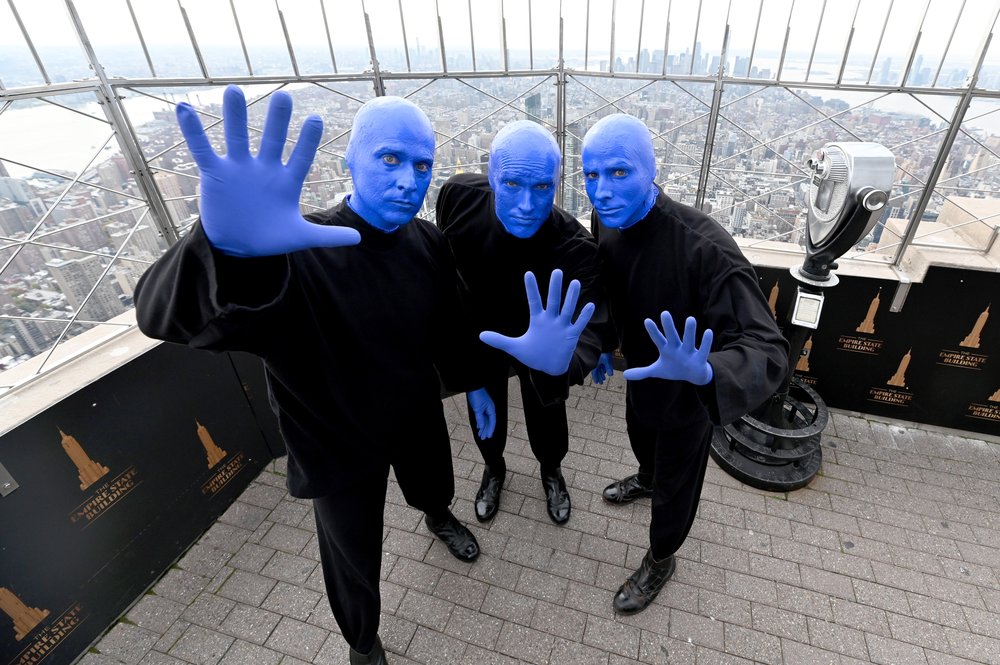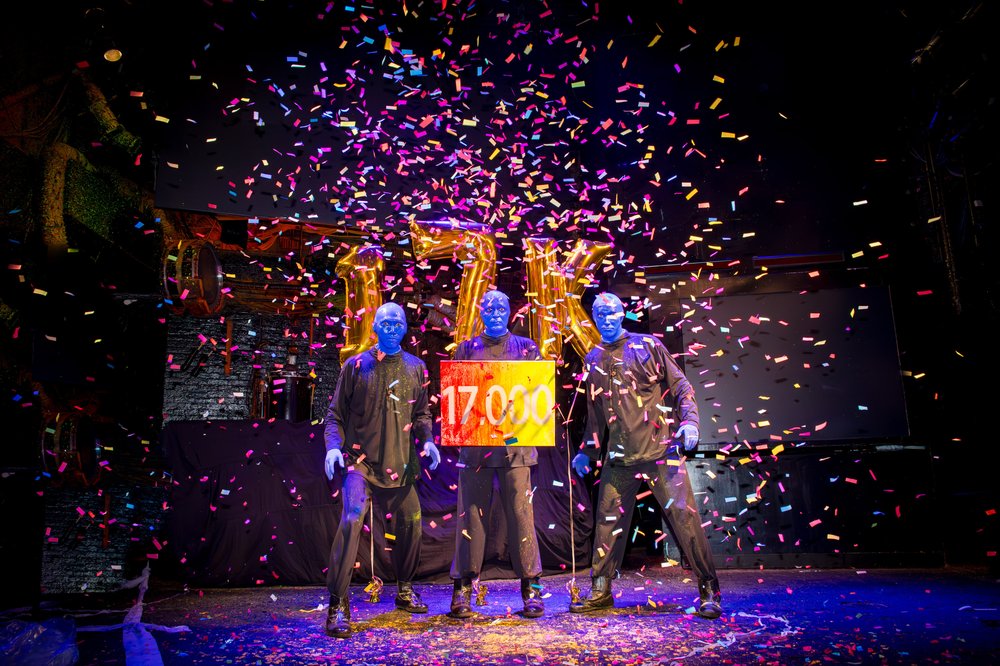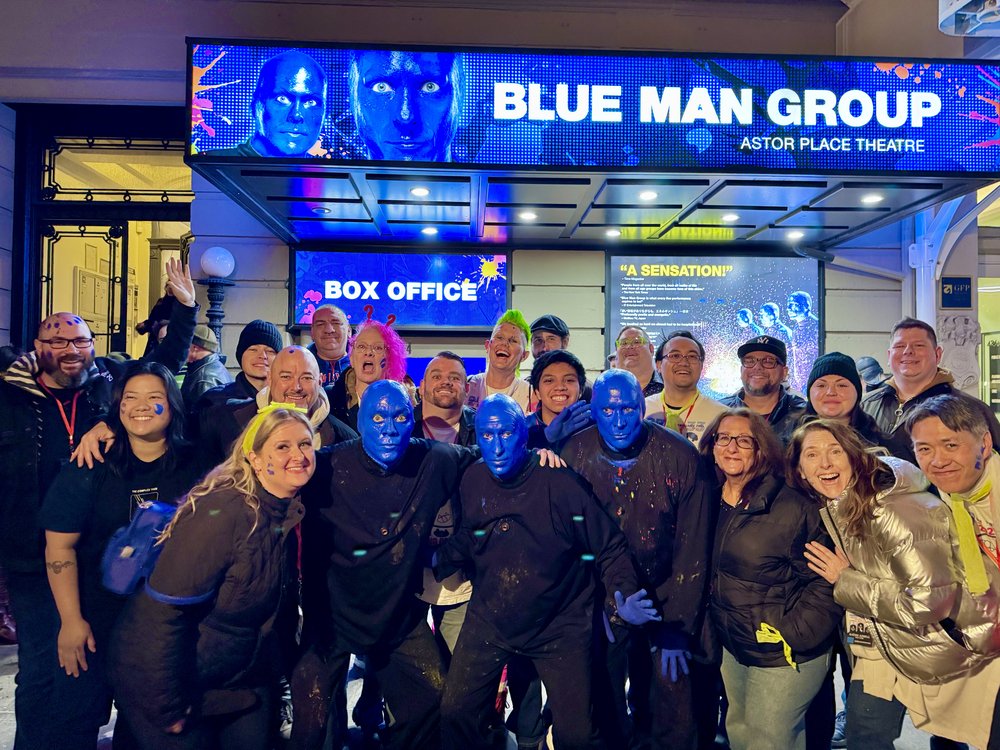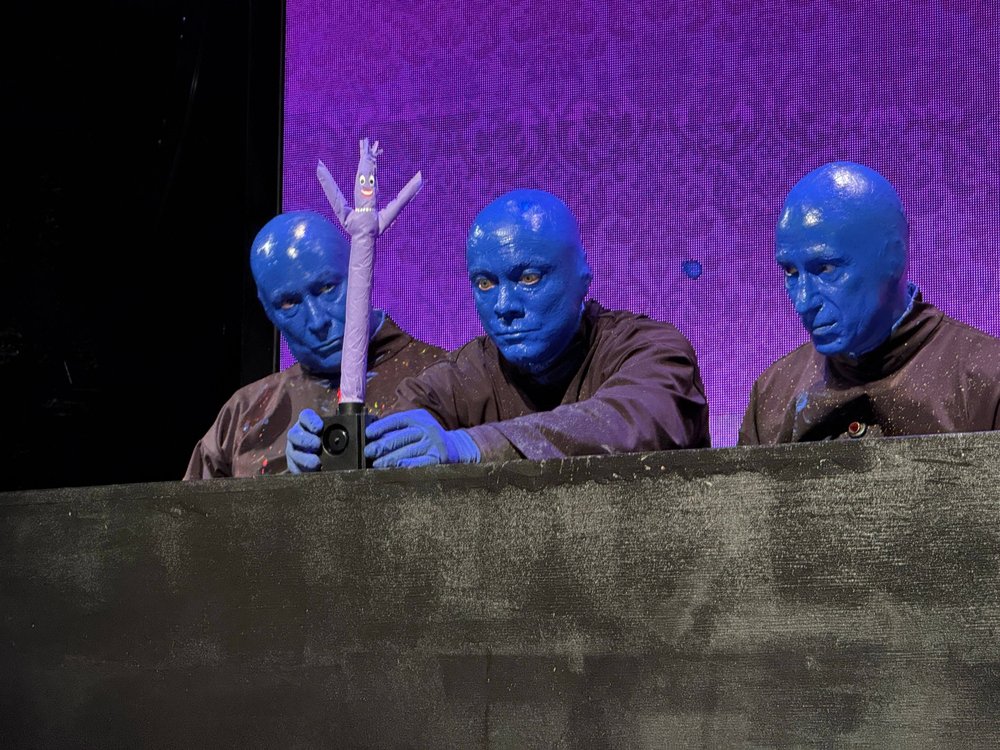'Like Florida without sunshine': The end of Blue Man Group's 33-year run in NYC
Jan. 30, 2025, 12:19 p.m.
“ We were just three guys who decided to get bald and blue,” said one of the show's cofounders.

Chris Wink, Matt Goldman and Phil Stanton workshopped the performance art piece known as Blue Man Group in small Downtown Manhattan venues and living rooms nearly 40 years ago. Its concept was profound yet bizarre in its simplicity: a non-story that conveyed human emotions through song and movement.
Blue Man Group has since become an enduring global phenomenon and has garnered praise for being both poignant and hilarious. In 2017, it was bought by Cirque du Soleil.
And after 33 years and over 17,000 performances at the Astor Place Theatre, Blue Man Group will end its run in New York City on Feb. 2. It's also ending its run in Chicago, though the shows in Las Vegas, Berlin and Boston will continue, and a new edition will open in Orlando, according to a report by the New York Times.

The show’s closure came as a surprise to Blue Man Group’s three cofounders, Wink, Goldman and Stanton.
The decision was made by Cirque du Soleil, as the cofounders all sold their shares in the company in the 2010s.
“Despite all our efforts, we have to admit that we have reached a certain limit in these two cities in terms of ticket demand,” Cirque CEO and President Stéphane Lefebvre wrote in a memo, the Las Vegas Review-Journal reported. “It is time for the Blue Men to explore new markets, starting with Orlando from April onwards.”
“It caught us by surprise,” Wink said in a phone interview.
The fact that a plotless, wordless performance by three bald, blue men involving a lot of crowd work and drums would become so successful also took them by surprise.
Wink and Goldman met in middle school, and Wink met Stanton when they were working as waiters for a catering company on the Lower East Side in the early 1980s.
“ We were just three guys who decided to get bald and blue,” Goldman said.

They’d rehearse material endlessly, cut what didn’t work mercilessly and perform whenever and wherever possible. Producers eventually took notice, and the trio opened at the Astor in 1991.
A few key media appearances (especially on “The Tonight Show with Jay Leno” in 1992) helped buoy Blue Man Group's early success, according to Wink, Stanton and Goldman, and word spread of the delightful and strange experience happening on Lafayette Street. The wordless performance was accessible to foreign tourists, and its abstract structure and universal themes appealed to all ages.
The cofounders got another lucky break in 1994, when the Astor’s former owner — a Tennessee-born eccentric and huge fan of Blue Man Group — sold them the building at a generous discount.
"The only thing he said to me was, 'Just promise me you're not going to flip it in five years and make me look like a fool,'" Goldman said. “I said, 'John, I'm raising my family here. We're not flipping anything.'”
And so he, Wink and Stanton kept their promise. They've lived at the two-building complex, which is connected by a courtyard and sits above an array of workspaces, for the past 30 years.
They said buying that building was the secret to their show’s longevity, because it gave them financial freedom.

“ The closing is sort of bittersweet, but mostly sweet,” Wink said. “Because it's like, wow, how can you complain about a 33-year run?”
“I think we all thought the show would just run forever,” said Akia Squitieri, who worked as the Blue Man’s Astor Place company manager.
The show has also created a web of people who found each other through seeing or working with the Blue Man Group — what Squitieri called “literal families of people who met their partner there and have had children together and continue to work at the show together, just networks of people that continue to create and work together beyond Blue Man.”
For many fans, the closure is the end of an era.
" New York without Blue Man Group is like Florida without sunshine,” said Orlando-based Joseph Burke, who has been voluntarily maintaining a Blue Man Group media archive for more than 20 years and met his wife at a summer 2008 Blue Man fan meet in Orlando.
"Blue Man Group was the catalyst for me to look beyond the boundaries of my own suffering," said Burke, who was born with hemophilia and contracted HIV through contaminated blood at age 2. "The show became a form of escapism, to the point where I could be that inner child for those two hours every time I saw a show."

The show also represented a rare indie success story in a scene dominated by big Broadway investors, Squitieri said.
As for the founders, they’ve all found life beyond the Blue Man Group: In 2006, they started the progressive Blue School, a private school in Lower Manhattan that closed in 2023. Goldman is currently interim executive director at the nonprofit Town Hall Foundation, which includes a 1,500-seat theater in Times Square, a position he feels his Blue Man Group work — and a Columbia University executive coaching program — prepared him for. Wink created Wink World, an immersive fun house that currently has locations in Las Vegas and in Bloomington, Minnesota. Stanton has mostly been focusing on his family while also maintaining his creative pursuits.
“I have mixed feelings about the closing, as you might expect,” Stanton said. “I’m very proud that I was lucky enough to participate in a project that had so much reach into the culture at large — I mean, as an artist what more can you hope for?”
Bryant Park Grill closing this spring, set to be replaced by a Jean-Georges restaurant Why are Broadway tickets so expensive right now? It’s not just inflation. The Queens cafe that’s a go-to spot for Korean cultural celebrations